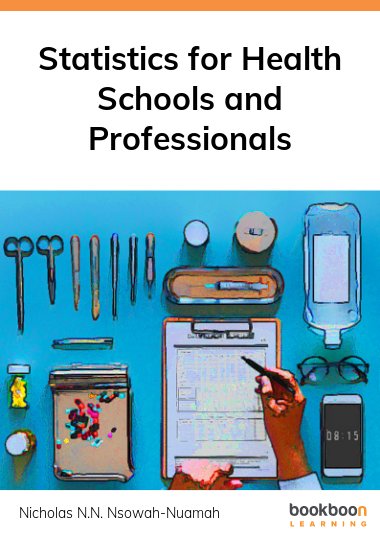Statistics is a requirement in health training Schools and Colleges. Yet most students in such institutions have very limited interest in the subject. The students, and even those in practice, need to have, at the very least, a good understanding of what statistics is all about and how statistics, as a tool for research, can be applied and interpreted. This text has been written in such a systematic way that the reader does not need an introduction to any topic to be able to understand it.
Chapters 1 and 2 form the introduction of the book, which respectively, defines statistics and terms, and concepts. Chapter 3 and 4 are on tabulation and Chapters 5 and 6 on charts and graphs. Chapter 7 is on measures of central tendency, popularly known as averages and Chapter 8 discusses quartiles which is one of the measures of non-central location. Chapter 9 is on measures of dispersion. The Normal and the Student's $t$ distributions are discussed in Chapters 10 and 11, respectively. The last chapter discusses Pearson's correlation coefficient and the Spearman's rank correlation coefficient.

